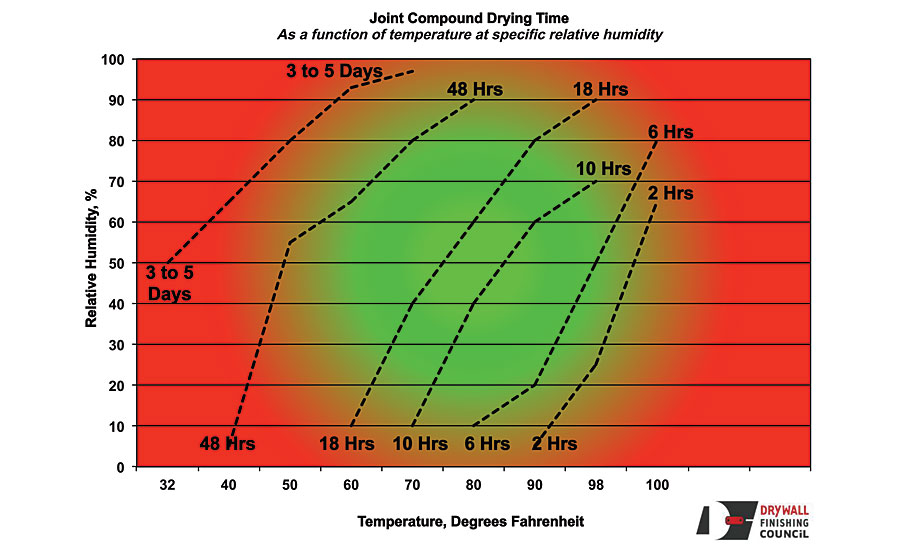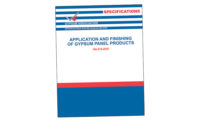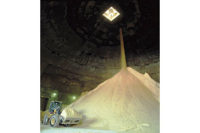Gypsum Association Revises Text in GA-216

As the technical, promotion, and information center of the gypsum industry, the Gypsum Association takes its responsibilities to the public and the contractor community very seriously. Considering that drywall is used in more than 95 percent of structures built today, the GA and its member companies feel increasingly obligated to disseminate accurate information about the proper handling, storage, application and finishing of gypsum panel products. The association’s Building Code and Technical Committee, comprised of technical experts from all member companies, devote countless hours to the task of writing and reviewing guidance documents. As a result, some 30 technical and informational documents are available to the public for free download via our online bookstore.
The GA also listens. Our technical services department responds to hundreds of calls and emails each month. Many are related to selecting the appropriate fire-resistant design assembly, but others come from contractors experiencing challenges in the field. Our member companies are similarly attuned to design and installation issues because they also answer questions related to their own proprietary products. The continuous revision of the GA’s technical documents provides opportunities to address these concerns. In addition to performing cyclical revision of code-referenced documents, such as GA-600, Fire Resistance Design Manual, the Building Code and Technical Committee regularly reviews and updates technical documents including GA-221-2014, Repair of Gypsum Board Joint Ridgingand GA-225-2015, Repair of Fire-Rated Gypsum Panel Product Systems.
Addressing the Issue
As designers increasingly turn to specialized performance categories of boards, the Association’s technical publications more comprehensively explain the nuances of their installation and finishing. Relatively new products, performance boards present the entire industry with a bit of a learning curve. Conditions in the field vary from site to site and from the laboratory settings in which these building products are repeatedly tested before release to the market.
When contractors began reporting disproportionately high rates of screw spinout associated with abuse resistant and impact resistant boards installed on 20EQ studs (also called -20 studs, among other names) the committee noted this as an issue to be addressed in an upcoming revision of GA-216, Application and Finishing of Gypsum Panel Products. The intention of the Committee was to specify a minimum stud thickness for these applications in order to avoid screw spinout. Again, the basis for the recommendation was complaints from the field, not laboratory results.
The change proposed and ultimately adopted in GA-216-2016 made use of incorrect language when describing the appropriate studs. Although the intention was to support the use of -30 and -33 studs rather than the use of -20EQ studs with abuse resistant or impact resistant panels, the language contained in section 2.2.12.4 used the term “base metal thickness” to communicate the recommendation. The proper term is “design thickness.” The following language has been adopted to correct the text in the recently released GA-216-2016:
2.2.12.4 Where studs complying with ASTM C645 are used to receive Abuse Resistant or Impact Resistant Gypsum panels, they shall be not less than 0.0312 in. (0.792 mm) design thickness and shall be in accordance with sections 4.3 and 8.1 of Specification C645.
By the time readers of Walls & Ceilingshave this issue of the magazine in hand, the electronic version of GA-216-2016 will reflect this change. In addition, all hardcopies of Application and Finishing of Gypsum Panel Productswill contain the clarification noted as an errata. The same errata will be emailed to those who have purchased GA-216-2016. Of course, the GA also will have communicated the change across the industry community.
On a related front, the recent release of GA-236-2016, Joint Treatment under Extreme Weather Conditions, brings greater clarity to the issue of preventing weather-related problems in the field. Because joint treatment materials are affected by temperature and humidity, dealing appropriately with weather extremes is essential to finishing gypsum panels in compliance with GA-216. Extreme weather can accelerate or slow the drying process and, unless preventative measures are taken, an imperfect finish, even cracking, can result.
Adapting to the Environment
GA-236 has traditionally offered methods for dealing with adverse environmental conditions, particularly hot dry weather, cold weather, and wet humid weather. What temperatures and humidity levels provide ideal conditions for the application and drying of joint compounds? Alternately, what temperature and humidity levels require additional attention and preparation prior to treating joints? These questions arise at some point of the year in almost every region of the North America. How do you know if you are good to go, or need additional prep time in order to increase and stabilize the indoor air temperature? What hot and dry conditions require working “quick and clean” and perhaps using a setting type joint compound?
GA-236-2016 provides important guidance around the decision making process related to extreme weather. Michael Schmeida, the association’s director of technical services says, “A great new feature of the 2016 edition of GA-236 is the inclusion of a dry time and conditions pictorial for joint compounds courtesy of our counter-parts at the Drywall Finishing Council. This color graphic provides an easy to understand visual for choosing the best conditions for treating joints as well as anticipating when they will be ready for sanding, etc.”
For his part, Robert Negri, president of the Drywall Finishing Council, says, “It was a natural fit for the Council to collaborate with the Gypsum Association. Improving the quality and standards of the drywall finishing industry through informative publications like GA-236 is a win-win for the drywall finishing and decorating trades as well as the manufacturers of drywall finishing products.”
Achieving a high quality installation and finish in accordance with GA-216 while simultaneously staying on schedule is particularly challenging under extreme weather conditions, but it is possible. We are pleased to highlight the new graphic on these pages and to provide GA-236-2016 for free download on the GA website.
Visit gypsum.org to download your copy of GA-236-2016. While there, feel free to explore the association’s many additional technical publications.
Looking for a reprint of this article?
From high-res PDFs to custom plaques, order your copy today!






